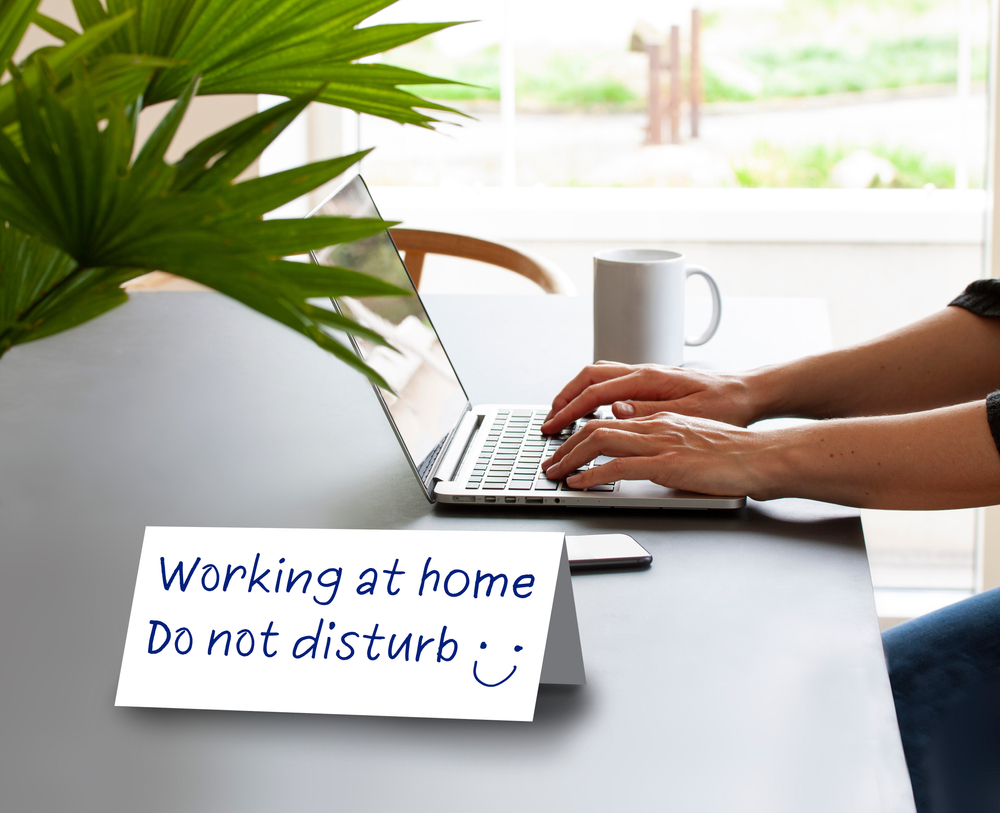Work-life balance is a common term in the professional landscape.
As the demand for Salesforce talent has continued to grow in recent years, candidates have had more choice over the employers they can work with. Often, this means they can choose a role where they not only get the benefits and salary they deserve but the right harmony between their personal and professional worlds.
Before the pandemic, work-life balance often meant things like flexible working and adjustable schedules. Since 2020, however, the rise of remote working and distributed teams means many companies and their employees are having to rethink their approach to work-life balance.
The Definition of Work-Life Balance Is Changing

The phrase work-life balance indicates having a separation between the professional and personal worlds in our lives. Unfortunately, that’s not as easy to manage today as it used to be. It used to be that leaving the office behind after a long day at work was enough to separate our work and personal lives. Now, work and home life are often the same.
Following the pandemic, schedules have shifted, and business hours often change from one day to the next, with many Salesforce consultants adapting their work to suit their home lives. While some employees and employers believe working from home is a positive thing for work/life balance, others find that the blurred lines make it difficult to know when to walk away from the home office.
“Burnout” in the workplace is happening more often than ever since 2020, and this places companies under greater pressure to find out how to create equilibrium for their employees or risk lost productivity, efficiency, and satisfaction.
So, where do you begin?
1. Setting Boundaries for Work
Even as we move ahead from the pandemic, the opportunity for Salesforce and technical staff to work remotely from anywhere in the world will prompt a continued focus on the hybrid workforce. This could mean that people in a business will be working across time zones throughout the day. When other employees appear to be constantly online, it’s difficult for some to know how to switch off.
Studies show that expectations for employees to be available 24/7 were accelerating burnout before the pandemic, and they grew even higher during the remote working revolution. Companies and their employees need to encourage breaks between work and personal lives. This means:
- Encouraging breaks: Employees should be encouraged to take regular breaks to switch off notifications on their phones and computers and focus on other parts of their lives. No one should feel guilty if they miss an alert on their computer when taking a break.
- Having set working times: Although the flexible schedule may be appealing to today’s employees, they should still have specific times they log into the office and log off each day, to reduce the risk of overworking.
- Setting policies: Employees should know the rules on when they should be available for all-hands meetings when they need to be online and how they can change their schedules if something comes up.
2. Preserving Flexibility

Having a set time to start and finish work each day can prevent employees from working too hard and burning out in a changing landscape. However, flexibility continues to be a must-have for a good work-life balance. Around 2 in 5 employees are expected to continue working from home regularly, even when the crisis is over, and many staff members will want this opportunity to work remotely.
Tech employees, like Salesforce staff, should have the opportunity to work remotely where possible. They should have the option to switch their working hours around when necessary, provided that tasks continue to be completed according to deadlines.
Workplace flexibility will look different for different people, so it’s worth speaking to employees about what they need from a flexible workforce. For some, it will be as simple as having the option to spend some days in the office and some at home.
3. Paying Attention to Engagement
With employees working in a range of environments worldwide, it will be even more important for companies to keep a close eye on their staff members. Managers and supervisors need to ensure that employees remain engaged, motivated, and satisfied with their working experience to reduce turnover.
The key to tracking engagement is ensuring employees don’t feel like they’re being monitored. Keep an eye on metrics like how frequently your employees take time off work in the new environment or how often they don’t come to meetings, but don’t chase up every team member whenever they’re not present in a group video conference.
To check how your employees are doing, without smothering them:
- Send out regular surveys and polls to collect information on wellbeing
- Track important metrics about absence and productivity
- Have one-on-one meetings with employees about their needs.
4. Taking Control of the Day

Part of achieving a good work-life balance in the new world is taking control of the workday. For employers, this means explicitly encouraging team members to use their time effectively. This could mean helping employees feel like they can disconnect by allowing them to set “do not disturb” hours working from home.
For employees, taking control of the day could mean blocking each day into separate times for “focused” work, meetings, and other kinds of tasks. This will help you to move through the day comfortably, knowing that you don’t have to be available for unexpected calls and messages constantly. Other ways to control the day could include:
- Choosing specific hours when employees should be available for communication
- Having a set meeting time each month or week for all employees to attend
- Allowing employees to forward messages and emails to another employee when they’re on vacation or away from work
Improve Work-Life Balance for Your Staff
To thrive in a changing workplace, employees need to know their limits and restrictions. When anyone can log in to work at the press of a button, it’s difficult to know when you’re “allowed” to take a break. Employers should ensure they’re not promoting a workplace where staff are expected to be available 24/7.
Instead, business leaders and managers need to set positive examples for their staff. These business leaders should reward employees for taking their wellbeing seriously. This could even mean setting up a wellbeing strategy where people are rewarded for dedicating time to exercise, family life, and good nutrition on a weekly or monthly basis.
Over time, both companies and their workers will better understand what work/life balance should look like in this new age. Until then, we’ll all need to keep a close eye on our own perception of balance.
Thanks,
Lee
